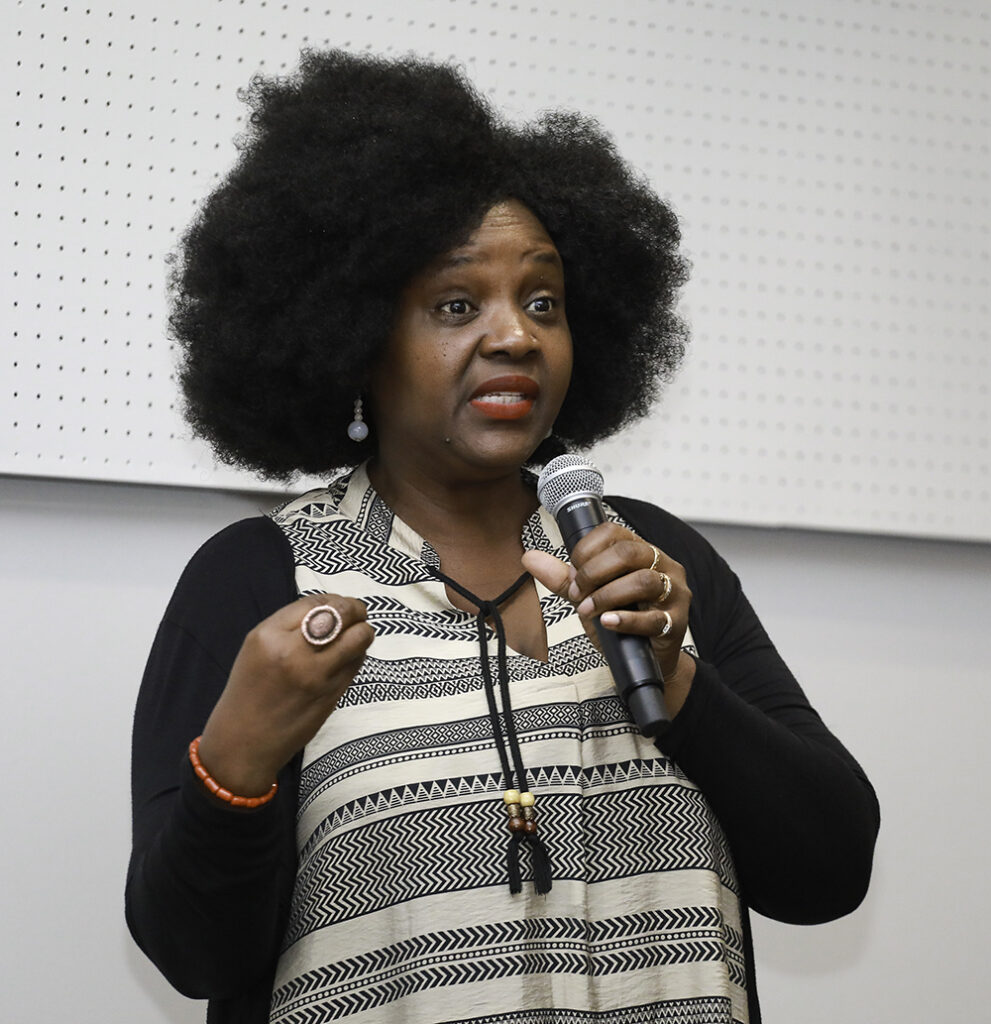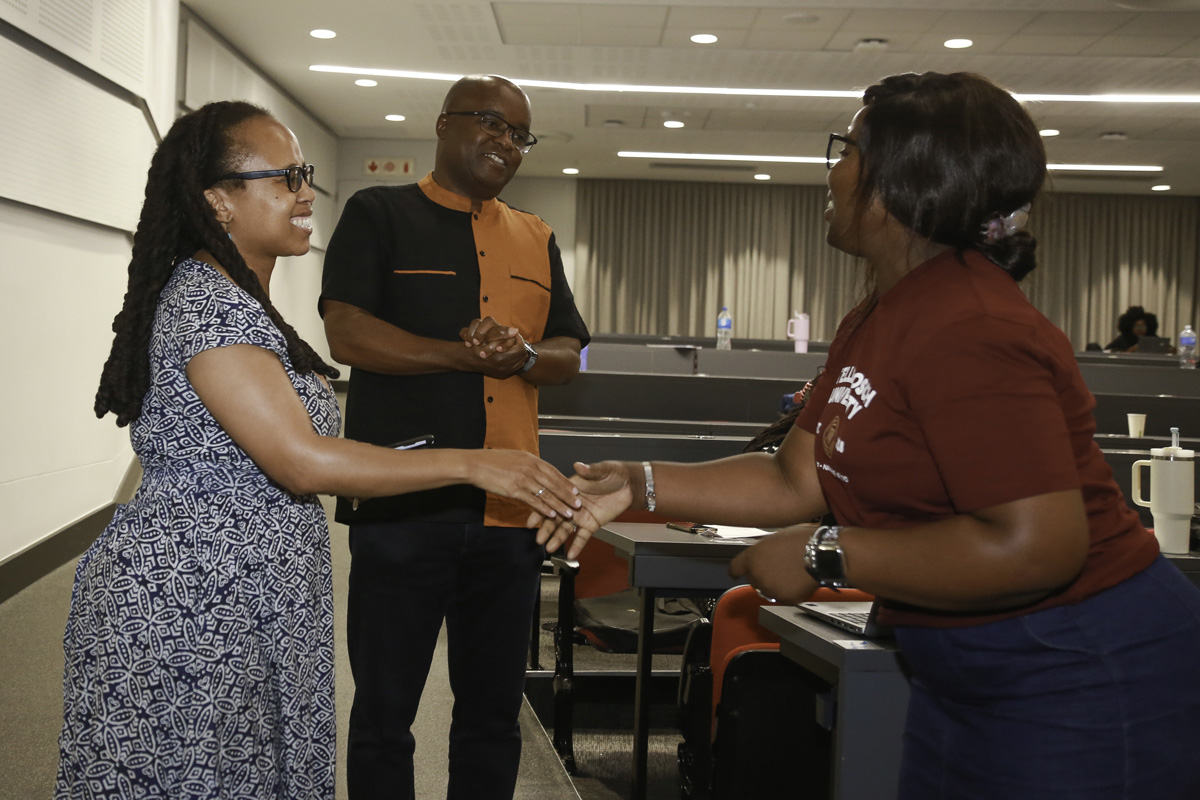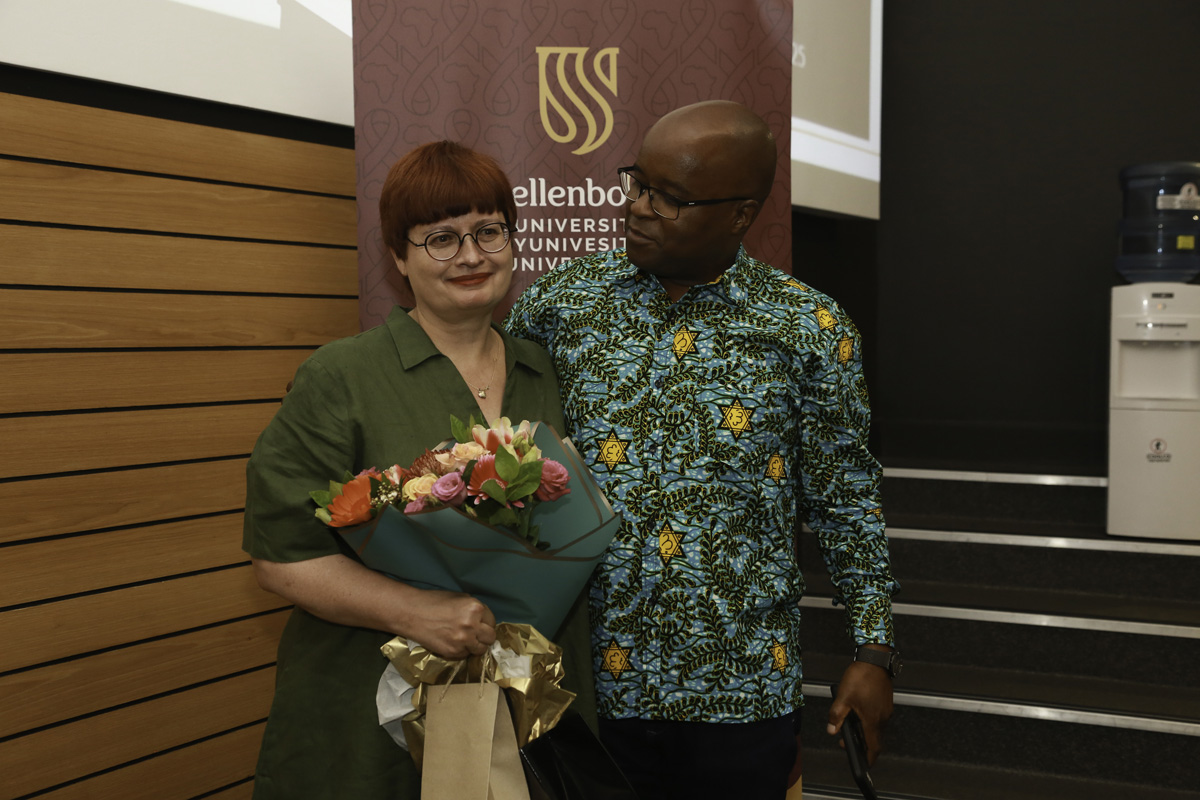
About the Africa Centre’s PgDip summer school
The summer school is the annual kick-off event for our flagship programme, the Postgraduate Diploma in HIV/Aids Management. From 3 to 7 February, we hosted the first face-to-face PgDip summer school since 2020. Every day was packed with insightful presentations relating to the PgDip modules and topics about the various dimensions of inclusive health management. This blog series provides an overview of the sessions and we hope the insights encourage prospective students to sign up for 2026. Find out more about the programme here.
The Africa Centre was originally established in response to South Africa’s HIV/Aids epidemic, focusing on the role of the world of work in combatting it. Although we have evolved in alignment with the global health landscape – culminating in our recent repositioning focusing on inclusive health management – working against HIV/Aids remains an integral part of our mission, as it is still one of the biggest public health challenges of our time.
The PgDip is an internationally recognised programme on HIV/Aids management and equips students with knowledge and practical insights on every aspect of the epidemic. At this year’s summer school, students were introduced to the various themes and topics covered in the course.
Click on specific icons to read the relevant recaps:
Health – Dr Takiyah White Ndwanya
The epidemiology of HIV – Dr Takiyah White Ndwanya
The epidemiology module is all about understanding the practical workings of HIV/Aids: origin, transmission, diagnosis, testing, prevention (including “structural” prevention, i.e. reducing vulnerability to infection), treatment (including the quest for a vaccine) and surveillance. Dr Takiyah White Ndwanya also provided an overview of the current status of the epidemic and what it would take to close the treatment gap, highlighting the role of communities and community organisations.
Overall, the epidemiological trend is positive: since 2010, new HIV infections have declined by 39%. Interestingly, UNAIDS data indicates that the greatest declines in new infections between 2010 and 2023 were in sub-Saharan Africa. Despite the progress, the numbers fall short of the target of fewer than 370 000 new HIV infections by 2025. White Ndwanya believes the key challenges to ending HIV/Aids include donor fatigue and competition with other health priorities.
What would it take to achieve success? She proposed a five-pronged approach:
- Everyone knowing their status, accessing affordable treatment and being virally suppressed (as per the 95-95-95 UNAIDS targets).
- Ending discrimination, which makes the people who are most vulnerable to HIV infection either not seek diagnosis and treatment or depriving them of access to testing and treatment.
- A global commitment to ending HIV and resourcing this through adequate funding.
- Focused interventions on countries, regions and cities with the highest prevalence of HIV.
- Understanding the need for HIV management to be seen as integral to development goals.
Socioeconomic aspects – Prof André Roux & Dr Wanga Zembe-Mkabile
The macroeconomic and socioeconomic impact of HIV/Aids –
Prof André Roux
Moving beyond the realms of healthcare, Prof André Roux helped students gain a better understanding of the impact of HIV/Aids on the economy, the labour force and the social welfare sector, especially education and health.
In a nutshell, HIV/Aids leads to additional needs and wants while simultaneously depleting the resources at a society’s disposal. On a micro-level, it affects the buying and selling decisions of both producers and households. On a macro-level, economic growth is compromised, skills shortages are exacerbated, inflation is elevated and development is compromised. With Africa bearing the brunt of the epidemic, Roux zoomed in on Africa’s socioeconomic context in light of the global realities of the Fourth Industrial Revolution (4IR), economic power shifts and mediocre global growth.
HIV/Aids, migration and poverty – Dr Wanga Zembe-Mkabile
The link between migration and increased risk of HIV infection – and the spread of disease in general – has been well-researched. The relationship can be ascribed to migration resulting in increased vulnerability, multiple partnerships, lack of access to health and other services, and frequent movements back home facilitating the spread of disease.
On a high level, Dr Wanga Zembe-Mkabile highlighted that the relationship between migration and health is best captured by the social determinants of health, such as where people are born, grow, live, work and age, as well as the surrounding conditions. On an individual level, things become more complicated: the conditions in which people make the decision to migrate (e.g. socioeconomic status), the migration journey (e.g. mode and duration of travel), and the circumstances they face on arrival (e.g. rights and integration), are all determinants of health.
Zembe-Mkabile unpacked this complex relationship as it relates to HIV/Aids, especially in a Southern African context, where migration has historically been linked to de-agrarianisation and industrialisation, land dispossession, the migrant labour system and environmental stress. She pointed out that although the link between mobility and higher HIV incidence is evident, the reasons for the link are more intricate, involving factors such as gender roles and individual sexual risk-taking. Students also gained a perspective on what is needed to effectively plan interventions and policies to tackle the structural drivers of HIV and other infectious diseases.
Policy and legislation – Russell Rensburg & Sarah Bosha
Designing and developing an HIV/Aids policy – Russell Rensburg
Most corporations have adopted environmental, social and governance (ESG) principles as central to their sustainability framework. ESG is informed by the UN Sustainable Development Goals, which include health and wellbeing. This is where an HIV/Aids policy comes into play. Russell Rensburg shed light on all the aspects relating to designing and developing an HIV/Aids policy, including:
- Principles that guide the design of an HIV/Aids policy, including understanding the legal framework
- The distinction between an HIV/Aids policy and programme
- Required steps, actions and resources to develop a policy from scratch
- Translating a policy into practice, dissemination and implementation
- How to ensure that the policy is acceptable and relevant to all stakeholders
Global legal and policy frameworks regarding employment of workers with HIV/Aids – Sarah Bosha
Legal guru Sarah Bosha presented on the legal basis and global standards that underpin acceptable and accessible healthcare services and policies, where all identities, lived experiences and viewpoints are respected and taken into consideration. She pointed out that, “The right to health requires tailored health services and policies that are accessible and culturally appropriate.”
To help students gain a firm understanding of all the factors informing the design of inclusive health management, Bosha provided a look at the various inputs:
- International and regional laws relating to HIV/Aids workplace management
- The human rights to work, health and privacy, and the interplay with principles of discrimination
- Global health policies for creating inclusive health management
- Inclusive workplaces and respect for human dignity
Culture and community – Dr Chioma Ohajunwa, Rachel Mbuyamba, Khadija Richards & Soufia Bham
The role of culture in the HIV/Aids epidemic – Dr Chioma Ohajunwa and Rachel Mbuyamba
Culture creates narratives, both spoken and unspoken, in the form of stories, imaginings and perspectives. But how do cultural norms shape HIV prevention, treatment and stigma? And what role does culture play in shaping global responses to HIV/Aids?
These are the questions Dr Chioma Ohajunwa and Rachel Mbuyamba addressed in their session, sharing valuable lessons with students:
- Culture can either help fight HIV/Aids by supporting healthy actions (e.g. a supportive community) or make it harder by encouraging harmful beliefs or practices (e.g. gender norms).
- Every culture has good and bad aspects and it’s important to understand both sides. We should make informed decisions that maximise the good and minimise the bad.
- Sharing accurate and relevant information is crucial to addressing cultural challenges and finding solutions.
- Faith and religion have a strong influence on people’s attitudes and behaviours, so we should acknowledge the role of religious leaders and institutions.
- Dialogue is critical: there should be intentional spaces where cross-cultural differences can be discussed to agree on the best practices and approaches.
Not stigma but discrimination – Khadija Richards
“Stigma is not a subject – it’s a symptom of discrimination.” These were the words of Khadija Richards as she emphasised how persistent and structural discrimination divides society, making it less able to advance. She explained that stigma manifests as the fear of social rejection on the basis of perceived undesirable features (e.g. looks, health or economic status) or the isolation of others on the basis of perceived risks to self (e.g. social or health risks).
According to Richards, “social fears are in all of us … it grows into stigma when reinforced by social norms, prejudice and isolation”. In an HIV/Aids context, stigma produces adaptive behaviours that amplify the risk of HIV acquisition as well as morbidity in people living with HIV and compromises the effectiveness of health programmes.
To fight stigma, Richards highlighted the importance of understanding who bears the burden of taking action against stigma. She provided a helpful framework for becoming allies to stigmatised people that anyone can apply in their everyday life:
- Be aware of your own self-criticism and bias towards others.
- Reframe your self-criticism to see your own vulnerability (not weakness), which will enable you to see others’ vulnerability (not weakness).
- Look for parts of yourself in others, which is the antidote to prejudice.
Practical community mobilisation and HIV/Aids management –
Soufia Bham
Mobilising communities, government and companies to help prevent and manage the spread of HIV/Aids and mortality is a vital aspect of the fight against the epidemic. Soufia Bham’s presentation focused on providing theoretical and practical knowledge of community mobilisation and advocacy on the ground – with an example of successful advocacy from Mauritius – to enable students to:
- Critically analyse social problems relating to HIV/Aids and its implications for HIV programmes.
- Apply a conceptual framework to address a specific social problem relating to HIV/Aids.
- Devise comprehensive interventions to solve HIV or other health challenges.
- Design an advocacy intervention, including strategies and tactics, to address a social problem.
Looking to the future – Mia Malan
Why climate change will make HIV spread faster – Mia Malan
Mia Malan of the Bhekisisa Centre for Health Journalism spoke about the link between climate change and HIV/Aids. She highlighted that, although the spread of HIV has slowed down, an increase in extreme climate events poses a real risk to this progress. Floods, for example:
- destroy roads, making it hard to get to clinics, which interrupts treatment plans (not only for HIV, but also for other diseases such as TB and diabetes)
- destroy homes, forcing people to stay in communal venues with little ventilation
- lead to other disease outbreaks, such as cholera, overburdening the health system
People also often lose their income during floods and droughts, which tends to lead to an increase in transactional sex, in turn resulting in a higher transmission of HIV. The impact of the 2022 KwaZulu-Natal floods on ARV adherence is a case in point: a study shows only 35% of people went back on ARVs after they stopped taking their treatment due to access issues.
Solutions to this challenge include providing treatment upfront for six months at a time (practised in Namibia) and using mobile technology platforms such as MomConnect (the flagship programme of the SA Department of Health) to issue flood and heatwave warnings. Malan said one of the critical solutions is international funding to help the Global South cope with the after-effects of extreme weather events. In this regard, the uncertainty around aid funding from the USA is a real threat.


Our other summer school lookback blogs focus on inclusive health management and academic support.
